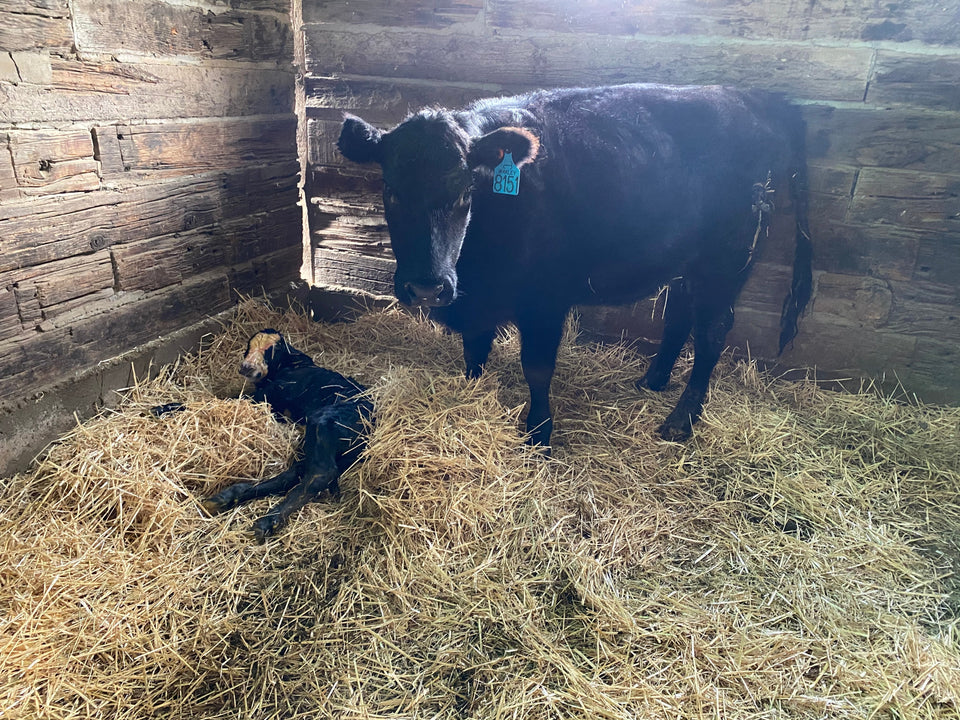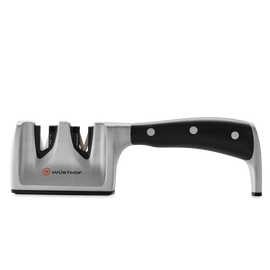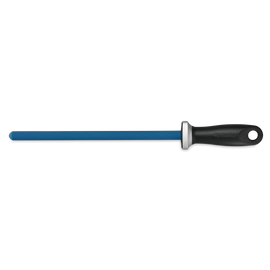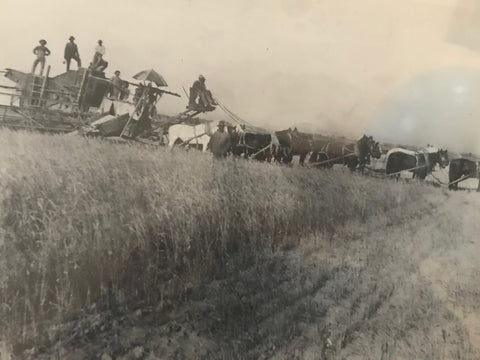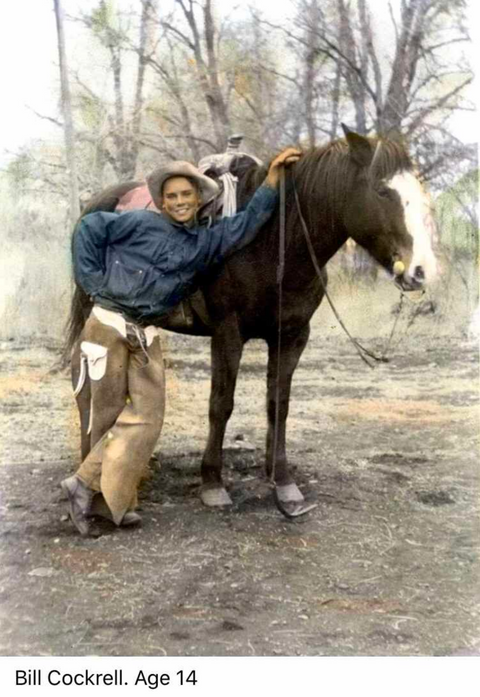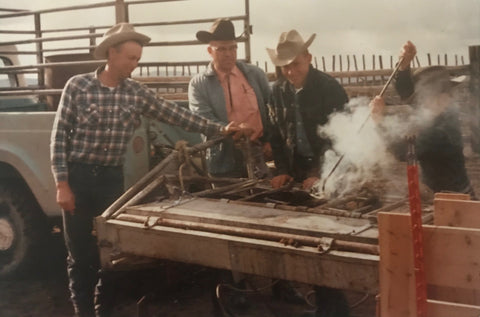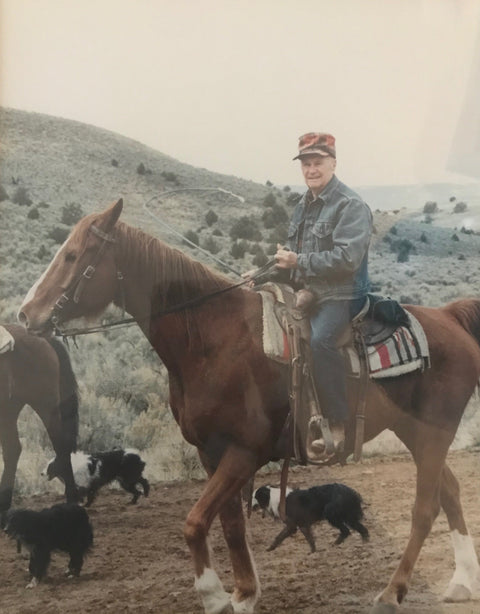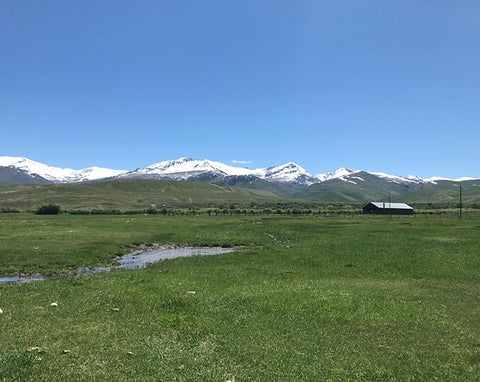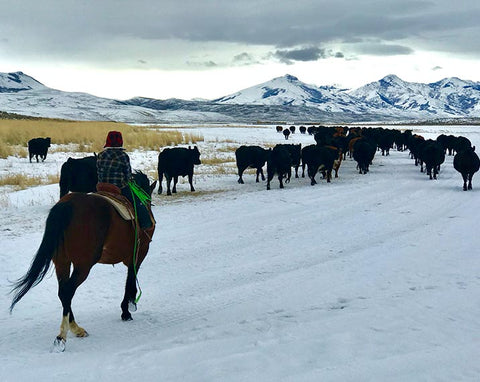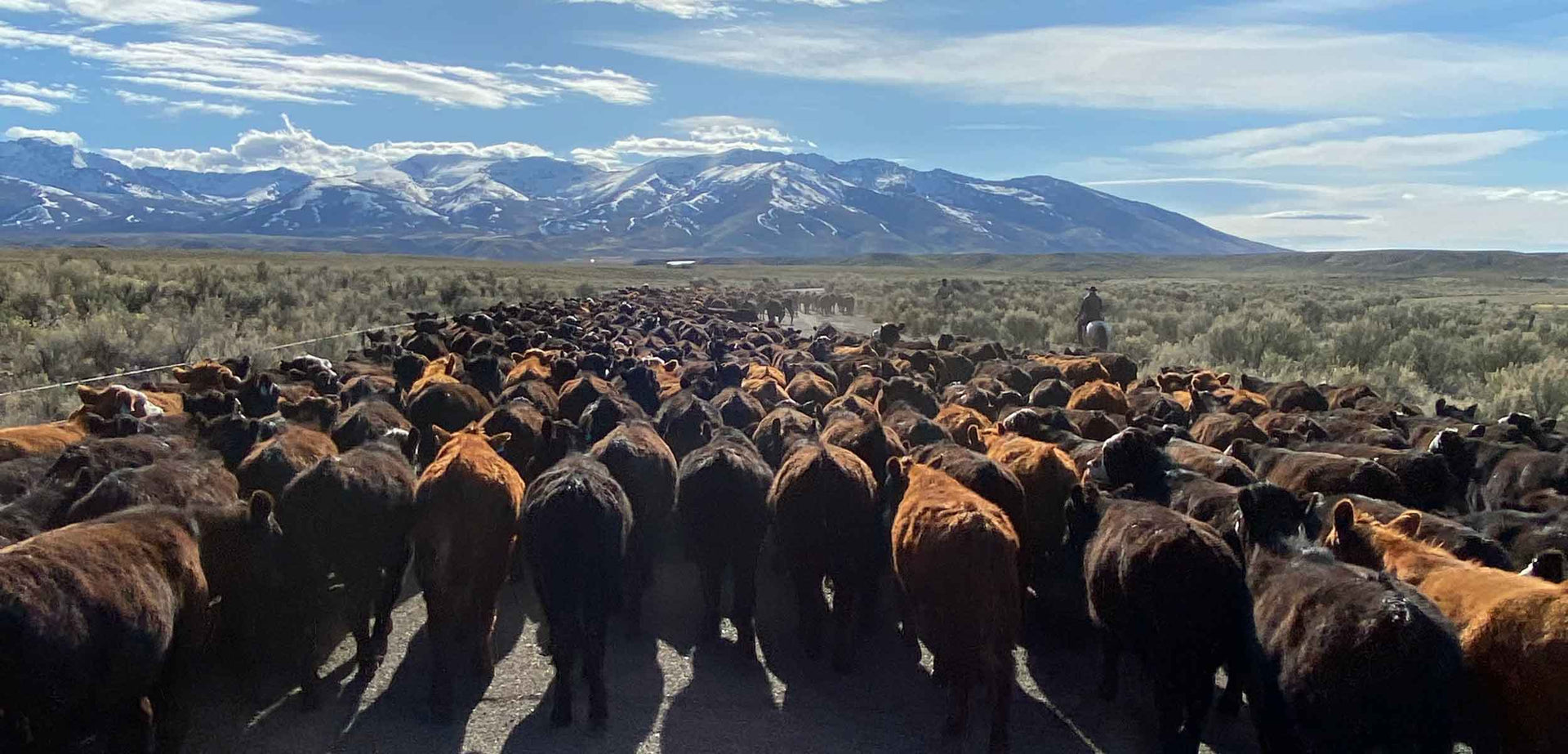
From the meadow to the perfect cut
Ranch to Table
What drives a successful knife manufacturer from Solingen to the barren expanse of north east Nevada? Nothing less than love and over 3,000 cattle.
“Isn't that wonderful?” Harald Wüsthof makes a sweeping gesture over the vastness of the landscape. Green steppe as far as the eye can see, to the distant mountains on the horizon, in the southeast to the snow-capped peaks of the East Humboldt Range. Welcome to Deeth, Nevada. That is what is called “the middle of nowhere”, the middle of nowhere. The next larger town, Wells with just under 1,500 inhabitants, is around 20 miles away. It's a good 33 miles to Elko, the county's capital. The next big city, Salt Lake City, takes around 3 hours by car.
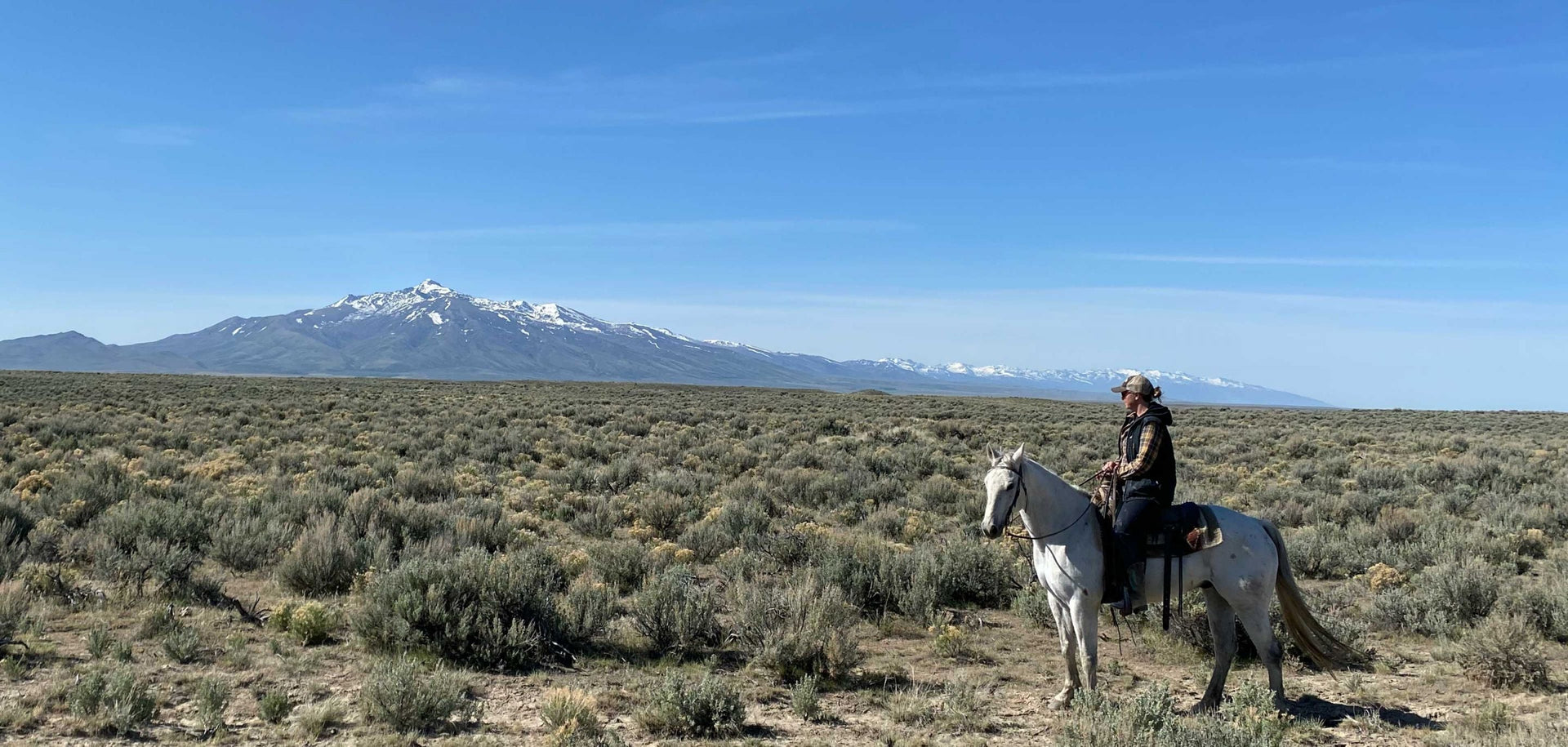
The middle of nowhere
This is where Harald Wüsthof, one of the two managing partners of the premium knife manufacturer from Solingen, found his personal happiness: Gwen Spratling-Wüsthof. Together with the other members of the Spratling clan, they run a ranch on 130,000 acres, the equivalent of 526 square kilometers. That is a fifth of the area of the Saarland and significantly larger than the urban area of Cologne, with 405 square kilometers, the third largest urban district in Germany.
“It's so very different from Solingen,” he says with a laugh. “And that's why I enjoy being in my second home just as much as in my real home. A really good mix. "
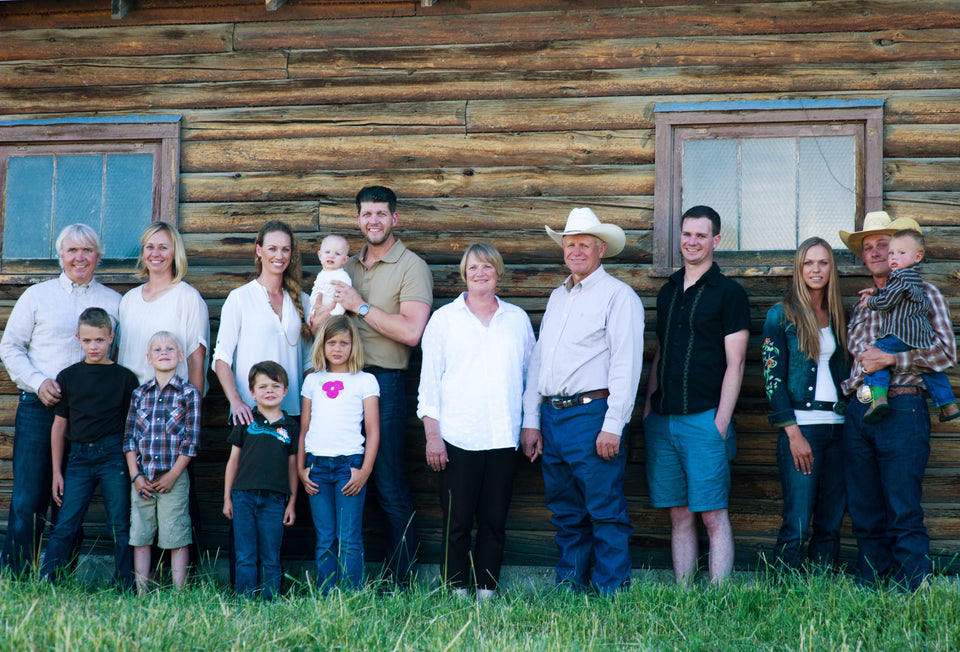
For a similarly wide view you have to climb a hill in Solingen. And they are pretty steep there. Instead, the valleys are cut all the deeper. Together with the abundant rainfall, this was precisely the locational advantage for the industry that made the city in the Bergisches Land world famous as a city of blades. Streams and rivers were dammed up and grindstones, small hammer mills and other mechanical devices were operated with the power of water. This is how the Kotten came into being, which at that time were, so to speak, simple factories. Today one would rather speak of workshops. By 1814 there were around 120 of them. One of them was WÜSTHOFs Kotten in the Weinsberg valley.
But even then, people were struggling with the limited space. Hard work, craftsmanship and perseverance, the mainspring of the expansion, soon made the Kotten and the valley too narrow. In 1867 they finally moved into new premises in Solingen, and the range was also expanded to include pocket knives. The world of WÜSTHOF knives was then really expanded with the overseas export business: In 1881 Robert Wüsthof, just 23, traveled to
North America and thus laid the foundation for conquering the American market with the high-quality forged knives from Solingen.
So it turns out that Harald Wüsthof, who today runs the family business together with his cousin Viola Wüsthof, is responsible for the American market. That's why his move to the ranch in Nevada is not quite as adventurous as it first seems - apart from the fact that love is always an adventure. He met Gwen at a housewares fair in Chicago. As a passionate knife manufacturer from Germany, he quickly got into conversation with the owner of a well-established steel goods shop with a large specialist department for knives. The two immediately noticed that in addition to a certain mutual magical attraction, they also had a lot in common: the same uncompromising attitude towards the quality of products, the same idea of entrepreneurship and sustainable management, the same attitude towards tradition and progress and how to bring the two together. And the same refreshing impartiality to tackle things. The cowgirl with the steel goods shop and the blacksmith of precise chef's knives, that just fit.
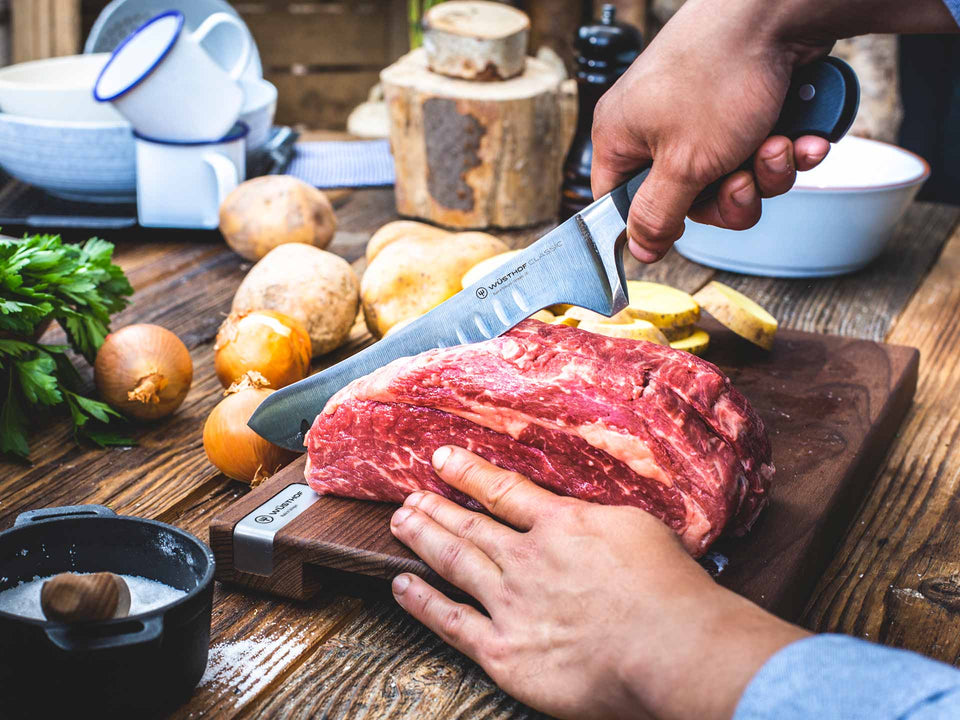
“
We raise first class cattle for first class meat. And for that you need first-class knives. A bad knife can ruin the best steak. If you have put so much energy, love and, above all, respect into raising the animals, you want your product to be processed and valued in the best possible way and just as respectfully.
Especially since both sides of Gwen's family, the Spratlings on the paternal side and the Cockrells on the maternal side, can also look back on an eventful family history. Like Harald, Gwen also represents the 7th generation. The Spratlings have always worked in agriculture, especially in cattle breeding, and that in England long before they jumped across the Atlantic. After emigrating in 1880, the family members moved to various states in the western United States, primarily to Utah, California and Nevada.
And now specifically: North-East Nevada. It's not nearly as hot here as in the more famous south of the seventh largest state in the United States of America. The climate is still close to that of a desert, as the scarce 300 mm of precipitation is evenly distributed over the year. But at around 1,900 meters above sea level, it rarely gets extremely hot. The average maximum temperature in the short summer is just over 30 degrees Celsius, with a peak of 38 degrees. Such values are no longer rare in Germany either. But because there are no large lakes that could store the heat and the sea is far away, the land cools down again at night. Even in July the thermometer falls below freezing point. In winter anyway: In January the lowest values are on average at -12 degrees Celsius, with peaks below -40.
Perfectly adapted cattle
The Black Angus and Hereford cattle breeds are perfectly suited to this climate. Introduced to the US by the English, they cope very well with the conditions in northern Nevada. But there is always room for improvement. At the family ranch the two are crossbred; the gene pool of the herd is carefully controlled using bulls raised on the ranch for breeding. The result is animals that thrive in the mountainous climate of the high desert and produce excellent meat.
Breeding is one criterion of success, attitude is another. From late spring through to autumn the cattle graze on the vast grasslands and the move to the summer pastures is always a big event, creating images straight out of a Wild West film: a huge herd of over 3,000 animals, cows and their calves, plus around 70 bulls, accompanied by cowboys. Except that this is not a film, it’s real and really is a lot of work: catching wandering cattle, attending calvings and branding the calves. The whole family has to get involved.
